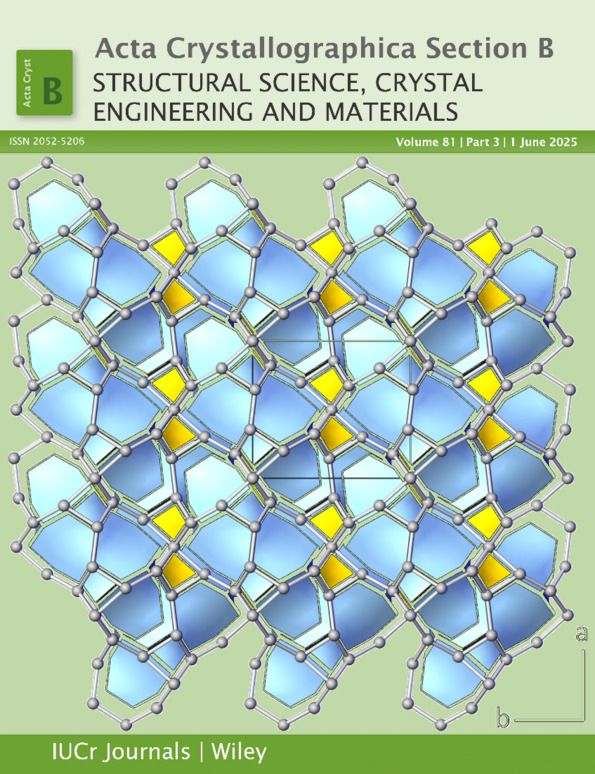Structural phase transitions, dehydration and decomposition of ammonium hypodiphosphates
Abstract
The ferroelectric diammonium hypodiphosphate, (NH4)2(H2P2O6) (3), is the only known so far ammonium salt of hypodiphosphoric acid, H4P2O6. A series of seven new ammonium salts is reported: triclinic (P1) (1) and monoclinic (C2/c) (2) polymorphs of monoammonium (NH4)(H3P2O6), isostructural (NH4)5(H2P2O6)(HP2O6)·H2O (4) and (NH4)3(HP2O6) (5), and tetraammonium (NH4)4(P2O6) (6), (NH4)4(P2O6)·H2O (7) and (NH4)4(P2O6)·2H2O (8). Monoammonium hypodiphosphates 1 and 2 crystallize in perovskite-type structures. Form 1 undergoes an order–disorder phase transition related to the dynamics of ammonium cations, the unit-cell doubling and no change in space group type. Dehydration–decomposition of 4 leads to the equimolar mixture of 3 and 5, whereas dehydration of dihydrate 8 proceeds in two steps, resulting in the formation of monohydrate 7 and then anhydrate 6. Compound 7 undergoes a reversible phase transition (P21/c ↔ C2/c) concerned with the reorganization of the hydrogen-bond network. Thermal analysis (DSC and TG-DTA) and variable-temperature microsample powder X-ray diffraction were used to analyse the phase transitions, dehydration and decomposition processes.




